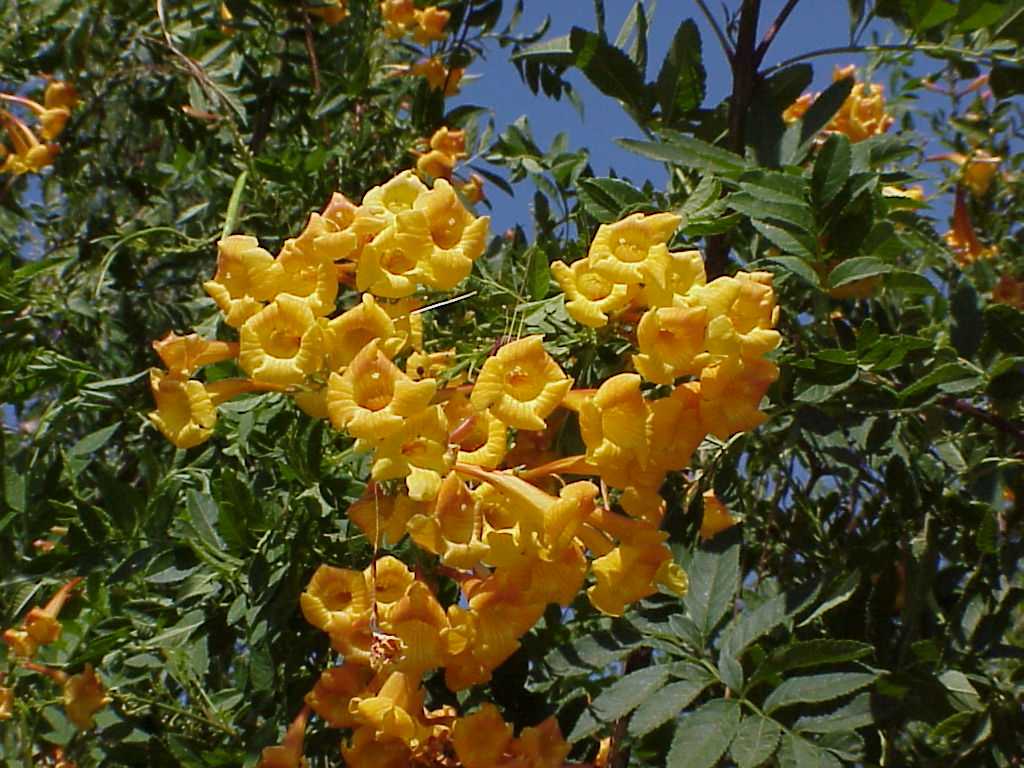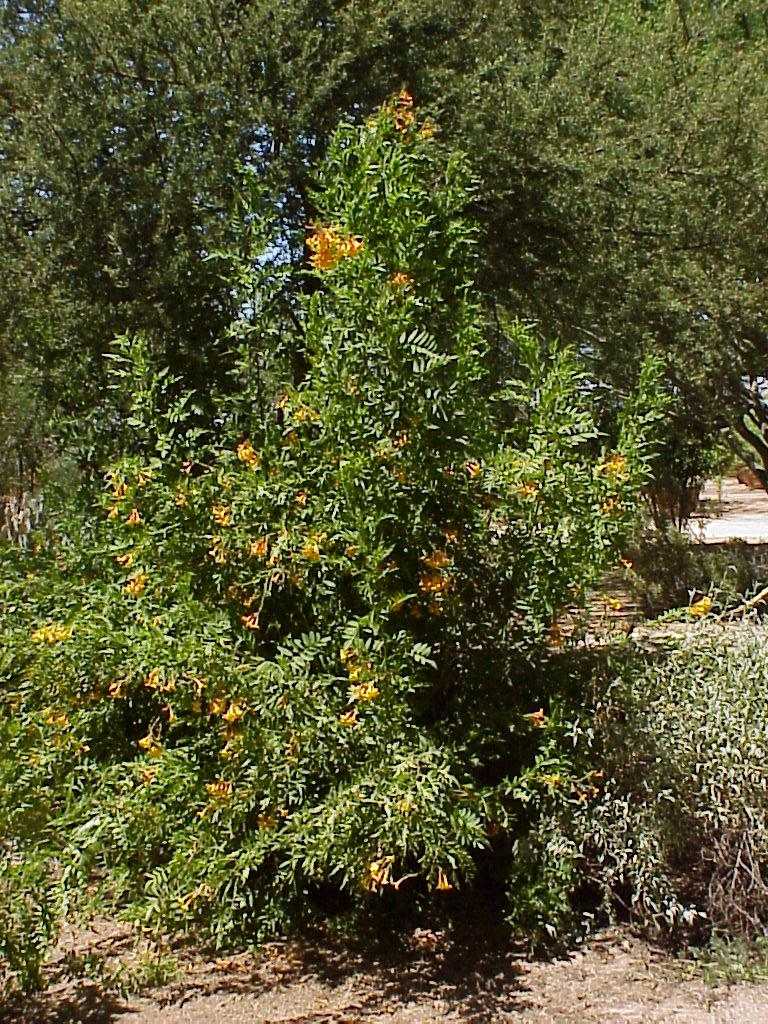


Tecoma garrocha
Herr
Foliage: Semi-Evergreen
Mature Height: 10’ - 20’
Mature Width: 8’ - 12’
Growth Rate: Fast
Hardiness: 20 degrees F
Exposure: Full Sun
Leaf Color: Deep Green
Shade: Filtered
Flower Color: Yellow-Orange to Orange
Flower Shape: Funnel Shaped Petals
Flower Season: Spring to Fall
Thorns: None
Propagation Method: Cutting
Sizes Available: Not in Production


Tecoma garrocha (Hieron) is the Argentine cousin of the more familiar Tecoma stans (Yellow Bells). Perhaps the most obvious difference from Yellow Bells is the deep yellow-orange to orange color of the flowers, borne in clusters on the terminals of new branches. Flowers appear from early spring to, in some locations, late fall. Flowering typically stops with the first freeze. The foliage is deeper green and denser than T. stans, with serrated-edged, lance-shaped leaflets. Depending on the severity and duration of freezing temperatures, plants may mature to heights of 10 to 20 feet tall, with plants in frost-free or protected areas growing tallest. Limited experience in the Phoenix metro area suggests that Hierons are hardy to 20 degrees F. Some frost injury to branch tips has been observed at temperatures below freezing. The roots are very cold hardy so even plants that freeze to the ground grow back rapidly in spring. Garrocha grows best in full sun and well-drained soils and can tolerate severe pruning during the winter. Winter pruning helps shape the plant and encourages the development of abundant new wood that will supports additional flowers. Some have mistakenly identified this plant as a hybrid with T. stans. T. garrocha is a legitimate, recognized species that produce true to type from seed. With tightly spaced, nearly vertical stems, the plant has a columnar, upright growth habit making it an ideal screening or perimeter shrub. Individual plants can be used as specimens, color accent shrubs, or against walls and structures. Its striking summer flowers are a welcome addition to desert landscape designs.

© Copyright 2000-2020 Arid Zone Trees